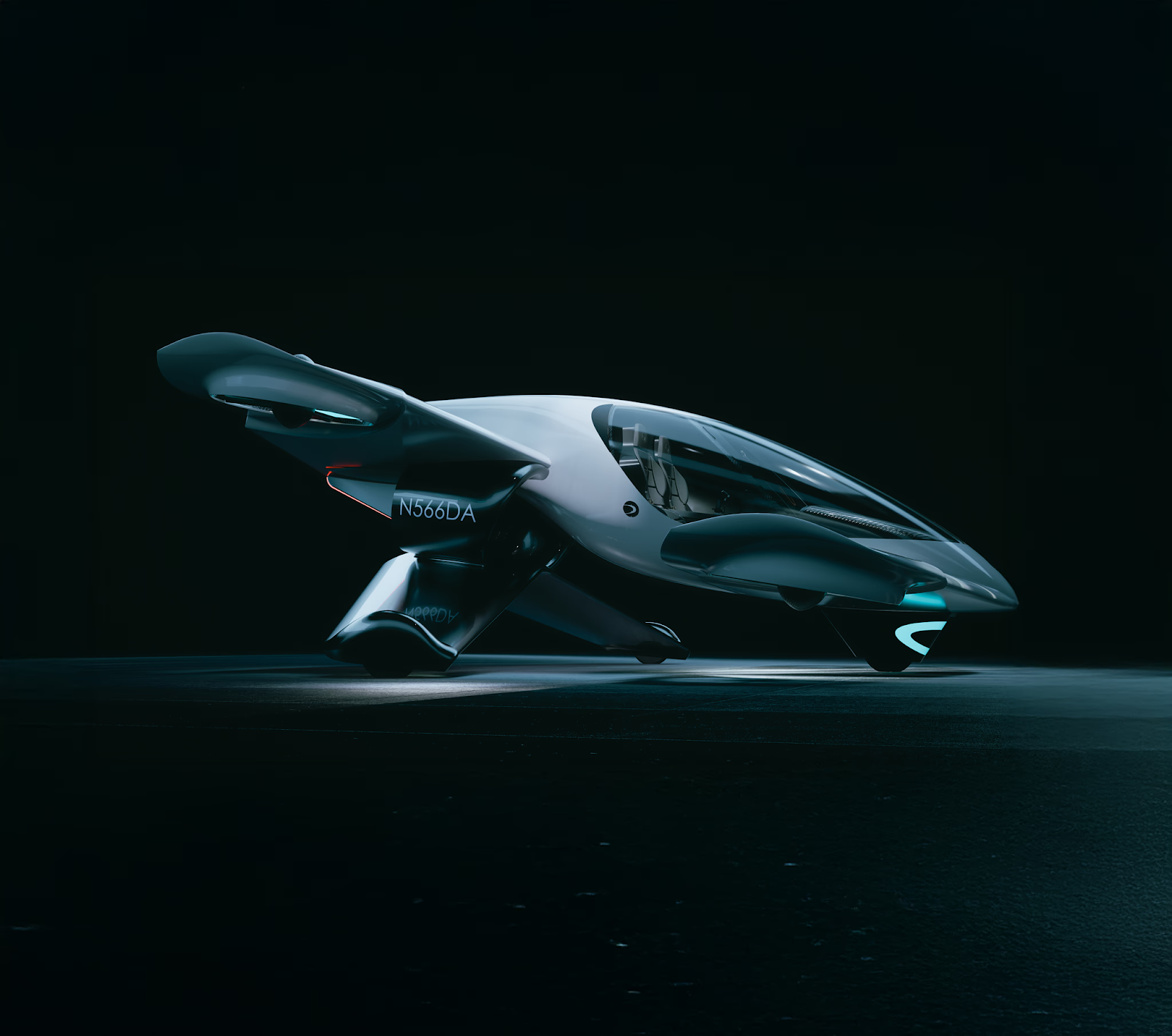With the “future” that held air cars that were closer to us than ever before in the history of modern science, the electric vertical start and landing market (Evtol) the aircraft is expected to touch on an estimated $ 17.34 billion in 2035.
Obviously, many key players are fighting for efforts in the big money promised by Urban Air Mobility (UAM), but no one makes it as personal as Doroni Aerospace’s H1-Evtol.

In A Market with Multiple Big and Small Players Like Wisk Aero LLC (US), Lilium GmbH (Germany), Ryse Recon, Archer Aviation (US), Joby Aviation (US), Texton Inc (US), Airbus (Netherland), vertical aerus Eve Holdings (Brazil) Offering Cutting-Edge Urban Air Mobility Options, Doroni Aerospace’s H1-stands out.
We quickly tell you exactly how.
Competition and innovation in the city’s air market
In laymen, the urban air mobility market is now on the same edge of explosion on which mobile phones were on, 7 decades back. They are just around the corner waiting to flood the markets.
And when they do, life we know about it will never be the same again.
Mobile phones were things of sci-fi films, but now they are an everyday reality that we cannot imagine our lives without.
In the urban air mobility space, doroni’s h1-x is that vehicle which, once it takes flight, is going to make air mobility an everyday reality for one and all, because while its competitors focus on developing evtol aircraft for intercity passes Involving Sophisticated Autonomous Systems Out of Reach and Access for A Commons, H1-is Keeping It Very Simple and Very Real-Its End User IS you.
And it really is H1-X’s focus on the individual that equip the vehicle for other applications as well, such as air taxi, etc.
Like Doron Merdinger, says the founder of the company, they want to democratize the city’s air mobility, and everything about H1-is designed in mind with that vision in mind, making it a hope forward to simplify air mobility in all its applications and forms.
While other Evtols on the market (such as Joby and Archer) are mostly designed with the goal of serving Urban Air Taxi Flots or large-scale logistics networks, and takes them out of reach for individual users in terms of cost and usefulness, H1-excludes this impossibility.
Anyone with a driver’s license can drive it after completing a 20-hour training.
In a market that is milded with innovation, H1-drives boundaries not only in performance, but also in accessibility, cost efficiency and security.
Let’s see how H1-compares with other Evtols on the market:
1. Accessibility and ease of use
When it comes to accessibility and ease of use, the closest thing that someone else Evtol comes to H1-Ryse Recon is on the market. Most other evasions work on advanced designs that require specialized pilot licenses or extensive training.
Ryse is an electric air vehicle with a person who can go up to 400 ft in height, weighs 286 pounds, the top speed of 63 miles per hour and intervals of 25 miles.
However, Ryse Recon’s brand, capacity and range make it more suitable for local use – its primary goals are agricultural and recreation markets.
H1-is not only designed to be as easy to fly as driving a car, it is almost twice or more of the Russian reinstruct on all parameters, making it closer to an “flying car” for urban individuals-it weighs 1850 pounds, has a 227 pounds of tax capacity, with a top speed of 140 miles per hour battery).
All of these make H1-suitable not only for travel within the city but also for air travel between the city within a radius of 50-60 miles.
2. Safety-first design
To ensure that your dreams of flying across the city are not paralyzed by security problems, H1-is equipped with anti-collision sensors and advanced autonomous navigation.
H1-X’s design is also very stable, even during vertical start and horizontal flight. Unlike some evidence that leaning wings or thrusters, H1-XS provides independent propulsion system slop-free flight, which allows smooth transitions from start to cruise rate without compromising safety.
But how they really take their flight a class is by offering a ballistic parachute throughout the aircraft.
Most of their co-runners (with the exception of Wisk Aero), in the race to bring vehicles to commercial service in 2026, have no plans to use the technology. They insist either that their aircraft will be certified with high levels of system prelude to protect against propulsion system errors and with means to land safely in an emergency, or deny any additional security from parachutes entirely (Jaunt air mobility, Volocopter, Ehang, Lilium).
3. Environmental responsibility
Throughout the market, however, players push against sustainability, and H1-has their operations set to adapt to this pressure.
It has a solid Vinge design with rear pushers, which is expected to optimize forward-driving, efficiency and stability. Equipped with eight vertical engines (two on each wing), H1-is completely electric and boasts with zero emissions.
Its most distinctive function, however, is its advanced Channel technology that reduces noise pollution, which makes a major breakthrough for the industry as a whole. Doroni has also ensured a patent on this technology.
Doron, who further explains his flying car’s reduced environmental impact, says, “… It also helps to reduce the environmental impact of urban infrastructure. No more massive highways or spreading paths are needed. With vertical start and landing functions, H1-offs from smaller spaces, preserves land and decreasing habits.”
While some of its competitors are still working to develop hybrid models or integrate alternative fuel systems, Doroni’s commitment to an allelectric design ensures that H1-remains at the forefront of the green revolution in aviation.
The fact that it can work from practical spaces such as urban roofs or parking spaces unlike many of its contemporaries also means that Doronis H1-does not need the extensive track systems, or vertiportin infrastructure that these aircraft would need.
4. Speed and efficiency
H1-offers twin benefits with a speed capacity of up to 120 km / hi combination with a fast charging time of just 25 minutes with a standard EV charger, which ensures minimal downtime between flights.
This fast charging time is crucial for users who need to be airborne and reach their destination quickly, whether for business, leisure or emergency response – which makes this evidence suitable for emergency/ disaster management situations as well.
Strategic partnerships and investment
It’s no wonder that H1-has been able to attract an investment of $ 30 million from no less than a Saudi Arab company!
Saudi’s Innovation Wings Industries (IWI) has proposed infusion of the amount in parts to speed up the development and commercialization of H1-to allow Doroni to quickly scale production and expand to new markets.
The agreement also includes a joint venture to manufacture H1-in Saudi Arabia and further expand Doroni’s global reach, prepared to position Doroni Aerospace as a key player in the Global Urban Air Mobility market.
An option for first respondents
Doroni Aerospace is not only aimed at consumers who want a personal flying vehicle but also work closely with first respondents, law enforcement and other specialized markets where air mobility solutions can have a life -saving effect.
The ability to distribute H1-units quickly and efficiently in emergency situations is an important focus for Doroni, who sees its aircraft as a solution to quickly respond to crises, traffic jams and environmental disasters.
The future takes flight
With over 600 pre-orders that have already been placed for H1-X, and with the vehicle’s showroom model that was launched in 2025, it is clear that there is a significant demand for this innovative personal air vehicle.
The first test flights are expected to take place later this year, and Doroni’s steady progress against FAA certification is another milestone on the road to full commercial launch.
Doroni Aerospace vision of a personal, allelectric flying car is a bold feature that can forever change our way of traveling.
With its user-friendliness, groundbreaking security features, environmental focus and significant strategic support, H1-is more than just an Evtol aircraft-it is an insight into the future of personal air mobility.
As we go closer to reality in widespread flying cars, Doroni sets a new standard for what is possible, which makes personal flights not just a dream, but an achievable, everyday experience.
Pre-order your H1-today and prepare for start.




